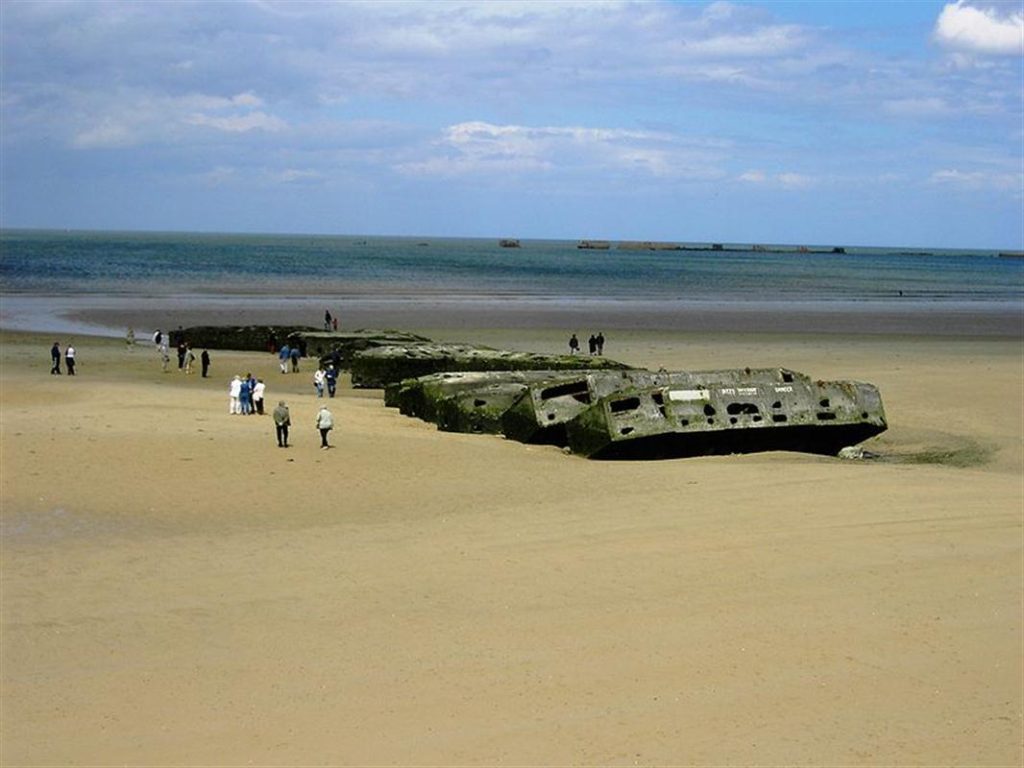A few days ago, Wrongo and Ms. Right visited the WWII Normandy beaches. This has special relevance to Wrongo because his father was part of Patton’s Third Army. The Third landed in Normandy on August 1, 1944. The role of the Third Army was to punch a hole through the German lines after the initial invasion of Normandy had softened them up. The Third did just that. They drove across France and into Germany in 90 days.
On November 8th, the Third Army started their first big fight inside Germany by attacking the city of Metz. Mr. Wrong’s father often spoke about the liberation of Metz, when Gen. Patton and a few staff units, including Wrongo’s father’s, made it into the city in advance of Patton’s fighting forces. Luckily (for Dad and Patton), their unsupported “invasion” of Metz happened without any disastrous consequences.
Today, let’s focus on an under told story of the Normandy invasion.
If the invasion of Normandy was to succeed, the Allies needed a place to land the men, materiel and supplies that a successful invasion requires. The entire campaign depended upon the speed with which reinforcements and supplies could be brought to Normandy, and then moved inland.
While there were many ports on the Channel coast of France, the Germans were fiercely protecting all of them. When the Allied military command decided it would be too difficult to capture one of them, an innovative solution had to be found. They soon focused on building an artificial harbor somewhere along the Normandy beaches.
Churchill had conceived of creating rudimentary harbors by sinking sand-filled barges during World War I. Although the concept was not used at that time, in 1941 the British War Office began evaluating and refining artificial harbor designs. This was carried out under the code name “Mulberry”.
In those days, an infantry division required about 400 tons of supplies every day, while an armored division like one of Patton’s, required 1,200 tons. During the early stages of the invasion, the Allies needed to have 8,000-12,000 tons cross the Channel every day. Ultimately, to support the growing needs of the push towards Germany, this had to increase by an additional 2,000 tons every day.
Where and how would this be accomplished by the Allies? It turned out to be at the Normandy town of Arromanches, (Gold Beach, one of the five Normandy invasion sites). The Mulberry project was huge and immensely complex. Logistics demanded that the harbor’s components be designed, tested and constructed in Britain, customized to specific hydrographical and topographical conditions, including Normandy’s 24’ tides, then transported across the Channel and erected quickly (within a matter of days).
It had never been done before, but the process kicked off on May 30, 1942 with a wonderfully simple order from Churchill to Lord Mountbatten about the task of constructing the harbor:
PIERS FOR USE ON BEACHES
They must float up and down with the tide. The anchor problem must be mastered. Let me have the best solution worked out. Don’t argue the matter. The difficulties will argue for themselves.
Given the way our Generals and CEOs micromanage today, it is impossible to imagine such a mission-critical element getting such terse direction.
Two artificial harbors were built, one by the British and one by the Americans. The American harbor at Omaha beach was destroyed in a three-day gale, but the British harbor was used to transport 2.5 million men, 500,000 vehicles, and 4 million tons of supplies during its existence.
It was an important key to victory in WWII.
Some remaining structures can still be seen offshore and on the beach at Arromanches:

